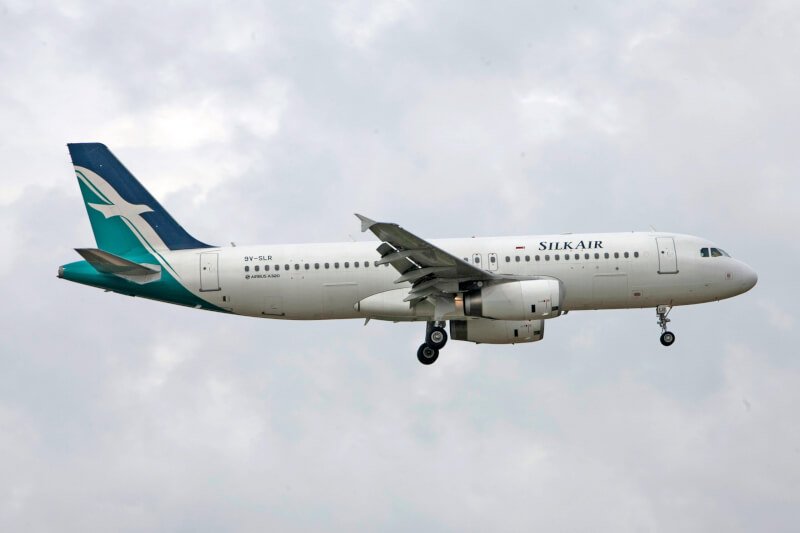Are you ready to take your RC helicopter flying skills to the next level? Look no further than “The Ultimate Guide to Tuning Your RC Heli’s Pitch.” In this comprehensive guide, you will learn all the tips and tricks to perfecting the pitch of your RC helicopter, ensuring optimal performance and control. Whether you’re a beginner or an experienced pilot, this guide will provide you with the knowledge and techniques to tune your RC heli’s pitch like a pro. So get ready to soar through the skies with precision and finesse, as we show you how to unlock the true potential of your RC helicopter.

Understanding the Basics of RC Helis
RC helicopters, also known as RC helis, are popular remote-controlled flying devices that offer a thrilling experience to hobbyists of all ages. To fully enjoy the excitement of flying an RC heli, it is crucial to have a good understanding of its components and how they work together. This article will provide you with a comprehensive guide to understanding and tuning the pitch of your RC heli, ensuring optimal performance and control.
Components of an RC Heli
Before diving into pitch tuning, it is essential to familiarize yourself with the various components that make up an RC heli. These components include the main rotor blades, tail rotor blades, swashplate, flybar, flybar paddles, and the electronic speed controller (ESC). Each component plays a crucial role in the flight characteristics and stability of your RC heli. By understanding these components, you will be better equipped to adjust and fine-tune the pitch to suit your flying style.
Understanding Pitch
Pitch is the angle at which the rotor blades bite into the air as they rotate. It is an important factor that determines the lift and maneuverability of an RC heli. By adjusting the pitch, you can control the vertical movement (altitude) and the horizontal movement (direction) of your heli. Positive pitch creates lift and allows your heli to ascend, while negative pitch generates downward thrust for descent.
Importance of Proper Pitch Tuning
Properly tuning the pitch of your RC heli is crucial for achieving optimal performance, stability, and control. Without proper pitch tuning, your heli may exhibit erratic behavior, difficulty in hovering, or even uncontrollable flight characteristics. By understanding and adjusting the pitch range, you can tailor your RC heli’s response to your flying style and optimize its performance.
Preparing for Pitch Tuning
Before you begin adjusting the pitch of your RC heli, there are certain preparatory steps that you should follow to ensure a safe and efficient tuning process.
Choosing a Suitable Flying Area
Selecting an appropriate flying area is essential for pitch tuning. You should choose an open and spacious location with minimal obstacles, ensuring that there is ample space for your heli to maneuver safely. Avoid crowded areas or areas with tall trees or buildings that could interfere with the flight path of your heli.
Safety Precautions
Safety should always be a top priority when working with RC helis. Before initiating the tuning process, it is crucial to follow certain safety precautions. Make sure to wear protective gear such as safety goggles to shield your eyes from any potential rotor blade accidents. Additionally, ensure that your heli’s battery is disconnected or removed during the tuning process to prevent any accidental startup.
Required Tools
To successfully tune the pitch of your RC heli, you will need a few essential tools. These tools include a pitch gauge, a screwdriver or hex key set, and a small wrench for adjusting the blade grips. The pitch gauge is particularly important as it allows you to measure and fine-tune the pitch range accurately.
Measuring the Current Pitch Settings
Before making any adjustments to the pitch of your RC heli, it is crucial to measure the current pitch settings to establish a baseline. This will help you determine the necessary adjustments required for achieving your desired flight characteristics.
Using a Pitch Gauge
A pitch gauge is a handy tool that allows you to measure the angle of the rotor blades accurately. To measure the current pitch settings, attach the pitch gauge to the rotor blades and adjust it to the zero-degree mark. Rotate the blades to different positions and take note of the corresponding pitch angle readings on the gauge. This will provide you with valuable information about the current pitch range of your heli.
Checking the Pitch Range
Once you have measured the pitch settings at various positions, it is essential to observe the overall pitch range of your heli. A well-tuned RC heli typically has a pitch range of around -2 to +10 degrees. It is crucial to ensure that your heli’s pitch range falls within this recommended range to achieve optimal flight characteristics. If the pitch range exceeds or falls short of these values, adjustments will be required.
Adjusting the Pitch Range
Now that you have established the current pitch settings and determined whether adjustments are necessary, it’s time to dive into the process of adjusting the pitch range of your RC heli.
Understanding Positive and Negative Pitch
Positive pitch refers to the angle of the rotor blades that generates upward lift, allowing your heli to ascend or maintain altitude. Negative pitch, on the other hand, produces downward thrust, enabling your heli to descend or perform controlled maneuvers.
Changing the Pitch Range
To adjust the pitch range, you will need to access the rotor head of your heli. This can typically be done by removing the canopy and any other protective covers. Using a screwdriver or hex key, locate the pitch control rods and adjust them according to your preferred pitch range. It is crucial to make small adjustments at a time and test the heli’s flight characteristics after each adjustment to ensure gradual improvements.
Ensuring Proper Blade Tracking
While adjusting the pitch range, it is crucial to ensure proper blade tracking. Blade tracking refers to the alignment of the main rotor blades as they rotate. A misaligned blade can cause vibration and instability during flight. To ensure proper blade tracking, use a small wrench to adjust the blade grips. Monitor the alignment of the rotor blades during flight to ensure smooth and stable operation.

Fine-Tuning the Pitch
Once you have adjusted the pitch range and ensured proper blade tracking, it’s time to fine-tune the pitch to achieve the desired flight characteristics.
Affecting the Heli’s Stability
The pitch of your RC heli can significantly impact its stability during flight. A lower positive pitch can enhance stability, making it ideal for beginners or casual flying. Conversely, a higher positive pitch can increase agility and response, allowing for advanced aerobatic maneuvers. It is essential to find a balance that suits your flying style and skill level.
Modifying Pitch for Aerobatics
If you are interested in performing aerobatic maneuvers with your RC heli, adjusting the pitch becomes even more critical. Increasing the positive pitch range will allow for more aggressive stunts and flips. However, it is crucial to ensure that the heli remains controllable and stable even during these high-performance maneuvers.
Finding the Ideal Pitch Setting
Finding the ideal pitch setting requires experimentation and practice. Gradually adjust the pitch range based on your desired flight characteristics, and spend time flying and observing how the heli behaves. Make small adjustments as needed until you achieve the perfect balance of stability, responsiveness, and maneuverability.
Testing and Adjusting the Collective Pitch
After fine-tuning the pitch, it is crucial to test the collective pitch of your RC heli to ensure optimal performance and control.
Performing Hovering Tests
Hovering tests are an effective way to assess the collective pitch settings. Begin by hovering your heli at a comfortable altitude and observe its behavior. Pay attention to any imbalances or inconsistencies in the flight characteristics, such as drifting to one side or unexpected altitude changes.
Observing the Heli’s Behavior
By carefully observing your heli’s behavior during hovering tests, you can gather valuable insights into the collective pitch settings. If your heli has a tendency to drift, it may be an indication of a need for pitch adjustment. Similarly, if the heli struggles to maintain a consistent altitude, it may require further fine-tuning.
Adjusting the Pitch as Required
Based on your observations during the hovering tests, make necessary adjustments to the collective pitch to rectify any instability or control issues. Ensure that any adjustments are made incrementally and that you perform additional hovering tests after each adjustment to assess the improvements.

Checking for Blade Tracking
Blade tracking is a critical aspect of pitch tuning and is essential for maintaining stable flight characteristics.
Identifying Blade Tracking Issues
Blade tracking issues can manifest as vibrations or instability during flight. If you notice excessive vibrations or erratic behavior, it may indicate a blade tracking problem. Inspect the main rotor blades for any signs of misalignment or uneven tracking.
Adjusting the Main Blade Grips
To correct blade tracking issues, locate the main blade grips and use a small wrench to adjust their position. Gradually tweak the blade grips and test the heli’s behavior after each adjustment. Ensure that the rotor blades rotate smoothly and evenly throughout their entire rotation.
Monitoring Blade Tracking during Flight
After making adjustments to the blade grips, it is crucial to monitor the blade tracking during flight. Keep a close eye on the rotor blades and observe any noticeable vibrations or changes in stability. If necessary, continue making incremental adjustments until the blade tracking is smooth and consistent.
Understanding and Adjusting the Swashplate
The swashplate is a crucial component of an RC heli, and proper adjustment is vital for achieving precise control and maneuverability.
Introduction to Swashplate Adjustment
The swashplate is responsible for translating the movement of the control inputs into corresponding blade pitch changes. Understanding its functionality is key to properly adjusting the pitch. The swashplate consists of three main parts: the inner swashplate, the outer swashplate, and the control links that connect them. Adjusting the length and positioning of these control links allows for precise pitch adjustment.
Three Main Swashplate Configurations
There are three main swashplate configurations: 90-degree, 120-degree, and 140-degree. These configurations determine the ratio between elevator, aileron, and pitch control inputs. Each configuration offers different flight characteristics, and adjusting the swashplate to your preference is essential for achieving the desired response from your heli.
Adjusting Swashplate Leveling
Properly leveling the swashplate is crucial for ensuring smooth and accurate control inputs. Use a pitch gauge or a leveling tool to verify that the swashplate remains level at various collective pitch settings. Adjust the control links as necessary to achieve the desired leveling.
Fine-Tuning Swashplate Mixing
Swashplate mixing refers to modifying the swashplate linkages to customize the flight characteristics of your RC heli. By adjusting the control links and their lengths, you can fine-tune the pitch response during different control inputs. Experiment with different settings and observe how your heli’s behavior changes to find the perfect balance for your flying style.

Additional Factors to Consider
While pitch tuning and adjustments play a significant role in optimizing your RC heli’s performance, there are other factors to consider that can further enhance your flying experience.
Effects of Weight Distribution
Weight distribution plays a crucial role in the stability and maneuverability of an RC heli. Ensure that the weight is evenly distributed across the heli to prevent any imbalance that may affect the pitch response. Adjust the battery placement or consider adding additional ballast if necessary.
Blade Types and Their Impact on Pitch
Different blade types can have varying effects on the pitch response of your heli. Consider experimenting with different blade designs and materials to find the optimal combination that suits your flying style. Pay attention to factors such as blade length, weight, and rotor disc loading.
Effects of Head Speed on Pitch
The head speed, or the rotational speed of the rotor blades, can greatly influence the pitch response of your heli. Higher head speeds tend to provide a more responsive and agile flying experience, while lower head speeds may enhance stability and ease of control. Experiment with different head speeds and assess how they impact the overall pitch behavior.
Troubleshooting Pitch Issues
Despite careful tuning and adjustments, you may encounter pitch-related problems with your RC heli. Understanding these common issues and their solutions can help you diagnose and resolve any pitch-related problems effectively.
Common Pitch-related Problems
Some common pitch-related problems include unstable flight characteristics, erratic behavior during maneuvers, or inability to maintain altitude. By closely observing your heli’s behavior and analyzing the flight characteristics, you can identify the specific pitch-related issue.
Identifying and Fixing Blade Tracking Problems
If you notice vibrations or instability during flight, it may indicate blade tracking problems. Inspect the rotor blades for any signs of misalignment, and carefully adjust the main blade grips to rectify the issue. Perform subsequent flying tests to ensure that the adjustments have resolved the blade tracking problems.
Diagnosing and Resolving Swashplate Issues
In some cases, pitch-related problems may be attributed to the swashplate. If you experience inconsistent pitch response, unresponsive controls, or difficulty maintaining stability, inspect the swashplate and its control links for any signs of misalignment or binding. Make necessary adjustments to ensure smooth movement and precise control inputs.
By following the guidelines outlined in this comprehensive guide, you will be well-equipped to understand the basics of RC helis, tune their pitch, and troubleshoot any related issues. Remember to take your time, make incremental adjustments, and always prioritize safety. With practice, patience, and an understanding of the nuances involved, you’ll be soaring through the skies with your perfectly tuned RC heli in no time. Happy flying!



